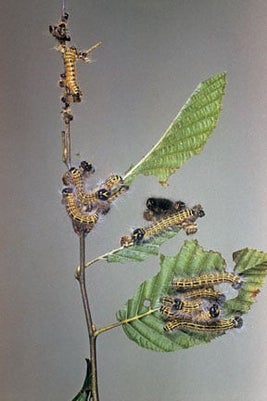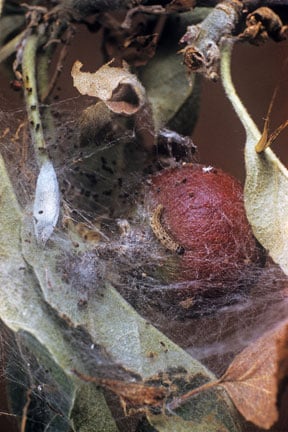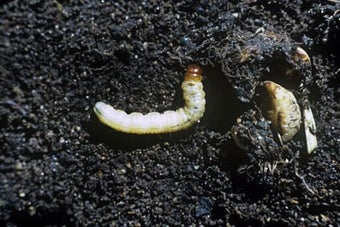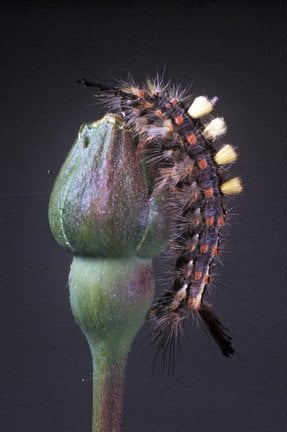
Quick facts
Common name - Buff tip moth
Scientific name - Phalera bucephala
Plants affected - Oak (Quercus), hornbeam (Caprinus), lime (Tilia), birch (Betula) and many other deciduous trees
Main symptoms - Large (up to 50 mm long) yellow and black caterpillars
Most active - July to October
What is Buff tip moth?
Buff tip moth adults have a wingspan of approximately 50 mm. When at rest they resemble a broken twig of a silver birch tree. It is the caterpillars that are often noticed in gardens as they are up to 50 mm long and have black heads with hairy black and yellow-chequered bodies. They feed gregariously and can cause a significant amount of defoliation on their tree hosts. The damage rarely has any long term effects on the health of trees and this insect is part of the a healthy garden supports.

Symptoms
Large (up to 50 mm long) black and yellow hairy caterpillars causing defoliation of large parts of host trees. It is found on oak, hornbeam, lime, cherry, birch and many other trees and shrubs. Small trees or shrubs can be completely defoliated, but they will usually recover.
The caterpillars are present from July to October and when fully grown enter the soil to pupate. After overwintering as a pupae the adult moths emerge from late May to July.
Management
Defoliation is most severe on small trees, however as this usually occurs late in the season it should not affect the long term health or vigour of the plants. Therefore as the caterpillars, and associated moths, are part of the wildlife a healthy garden supports they should be preserved. If the caterpillars are spotted early on small trees they can be removed to a larger tree. On larger trees, whilst some parts of the plant may be defoliated, this will have no effect on the health of the host. It is unusual for a tree to be affected in two subsequent seasons by this moth. In addition the caterpillars, and associated moths, can be an important as a food source for other garden wildlife.










